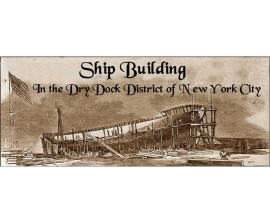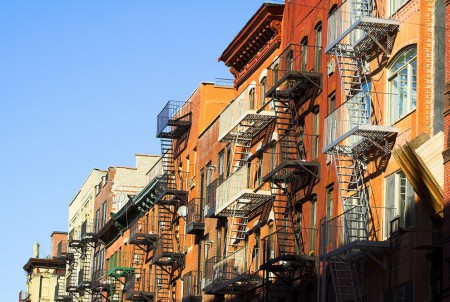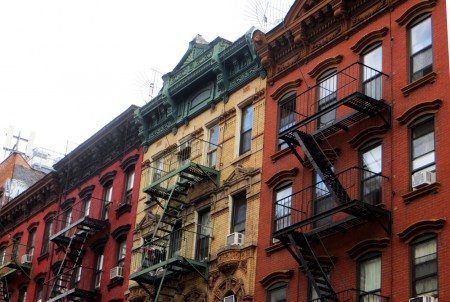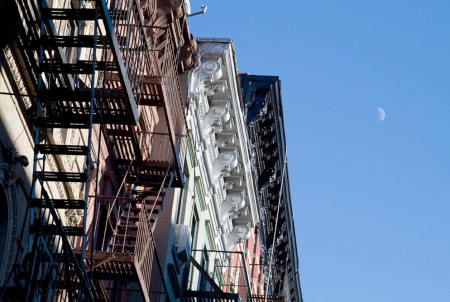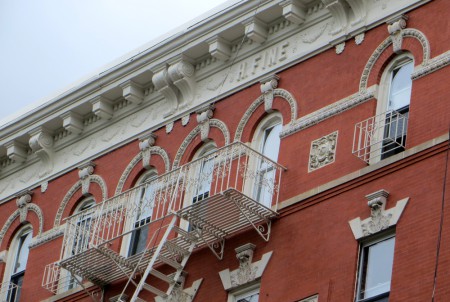East Village/Lower East Side, Manhattan
Famous worldwide as home to waves of immigrants arriving in New York City, the East Village / Lower East Side is one of the most culturally significant sections of the city. While much new development has taken place, including luxury residential high-rises built to take advantage of the neighborhood’s relatively new caché, its built environment offers rich reminders of its storied past.
Historically, the Lower East Side extended from East 14th Street south to Fulton and Franklin Streets, and from the East River west to Broadway and Pearl Street. Today, the regarded boundaries of the East Village and Lower East Side extend roughly from East 14th Street to the Bowery to the East River, with Houston Street as their north-south divider. Nicholas Bayard III, a descendant of Peter Stuyvesant (Director-General of New Netherland), named the street for his son-in-law, William Houstoun, a member of the Continental Congress. The Bowery, one of Manhattan’s oldest streets, runs through both neighborhoods. Please see the Historic Districts Council’s 2011 Six to Celebrate Bowery brochure to explore this historic thoroughfare. The East Village became its own entity in the 1960’s, when Greenwich Village bohemians moved east for affordable housing and established the East Village art, music and theater scenes. The main thoroughfare through this artists’ haven was St. Mark’s Place, a strip of funky shops, tattoo parlors and cheap eats that still evokes this period in the neighborhood’s history.
The area’s architecture reflects its early development, with extant examples of early 19th century rowhouses, religious structures, theaters, schools, libraries, banks and settlement houses. The major character-defining building type is the tenement, a multi-family dwelling that typically consists of five or six stories with four apartments per floor. Originally, as many as ten people occupied each roughly 300-square-foot apartment. Lacking light, air and privies, these crowded, slum-like conditions led to the passing of regulatory legislation. Though few adhered to it, the first law passed in 1867 requiring the installation of fire escapes and outdoor privies. In 1879, the Tenement House Act required that new tenements include center shafts to allow in more light and air. In 1901, the New York State Tenement House Act refined this concept with required inner courtyards and shared bathing facilities. Due to their larger size, these were built on multiple or corner lots. Thus, tenements built before 1879 are referred to as “pre-law”, between 1879 and 1901 as “Old Law”, and after 1901 as “New Law.” Exterior ornament speaks of the tenement's construction date: pre-law were quite austere, Old Law often included multi-colored brick and carved sandstone figures, and New Law were influenced by the Beaux-Arts style, with oval and arched windows, classical ornament and projecting bays.
The East Village contains three New York City historic districts: St. Mark’s Historic District and Extension, East Village / Lower East Side Historic District and East 10th Street Historic District. The latter two were designated in 2012 after a robust advocacy and outreach effort by community groups and preservationists. At the time of this publication, there are no locally designated historic districts in the Lower East Side.

